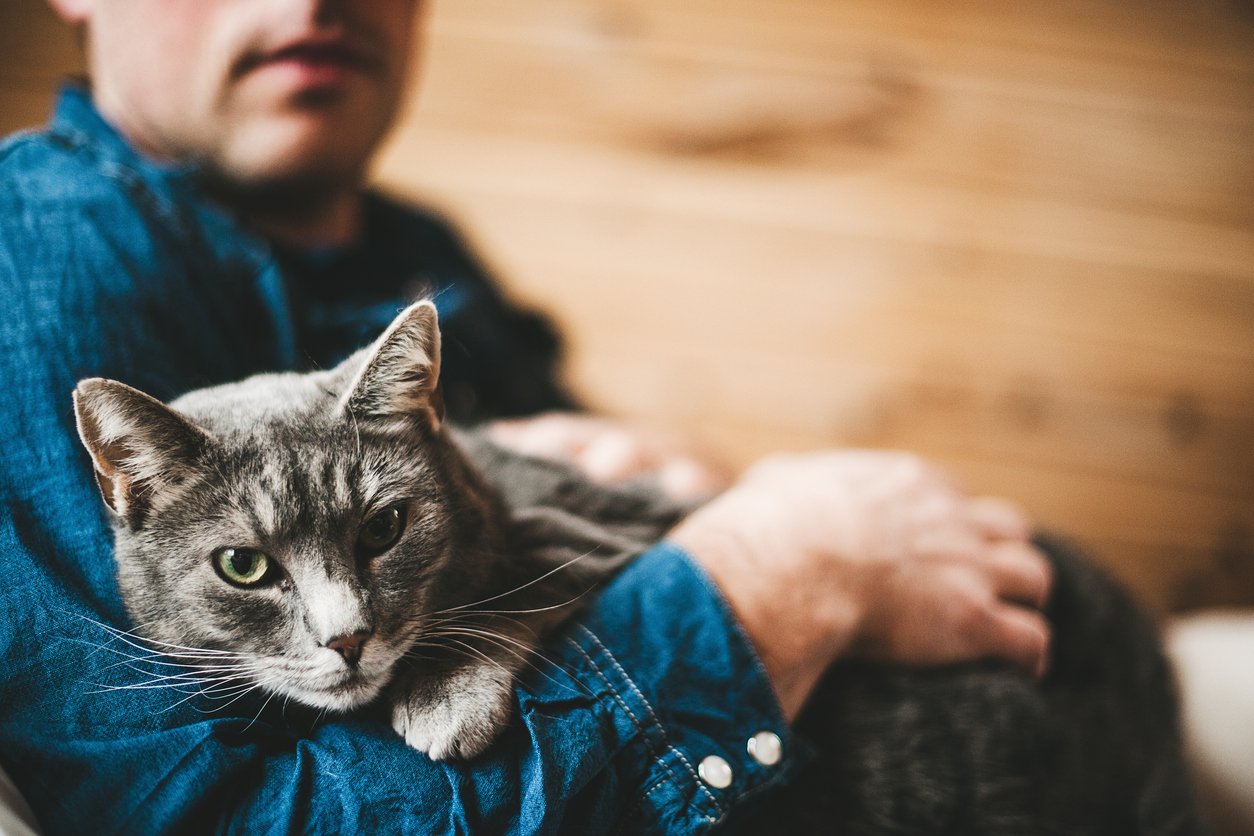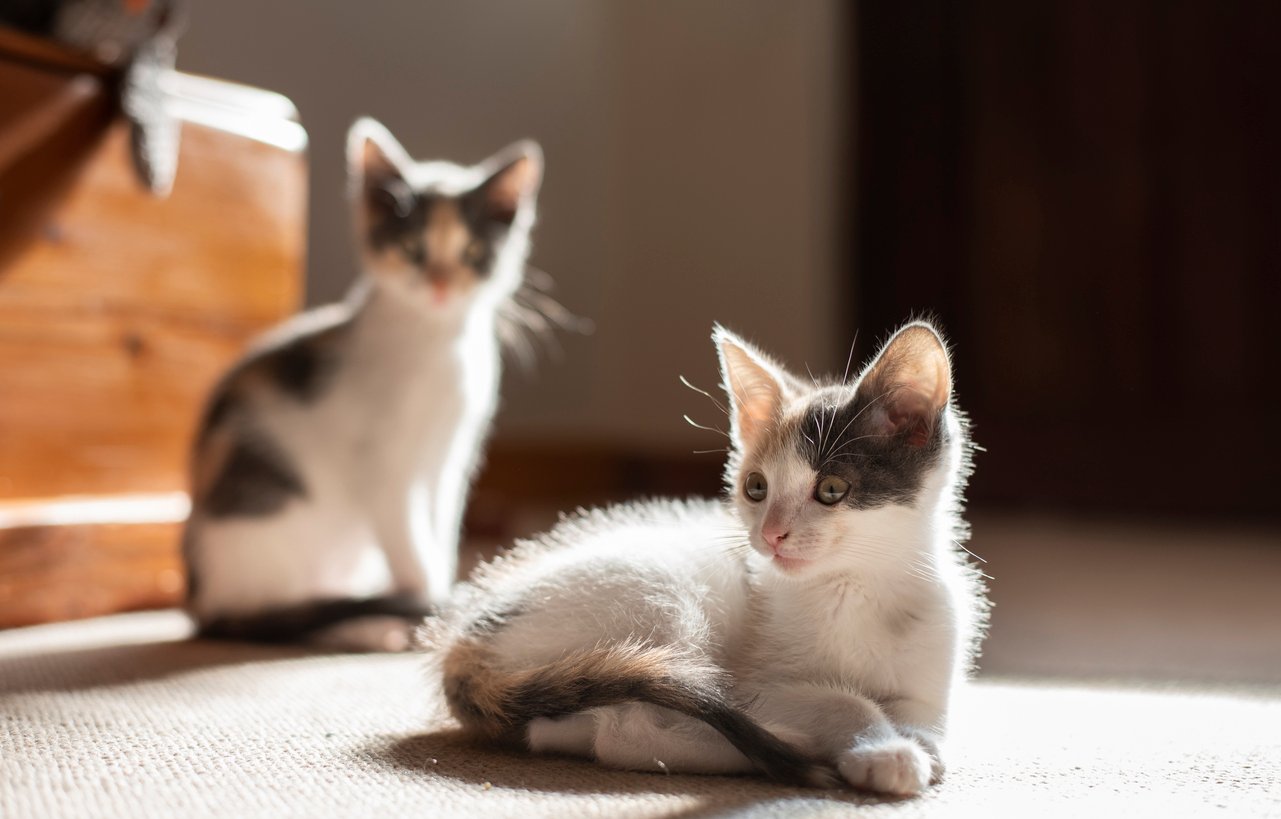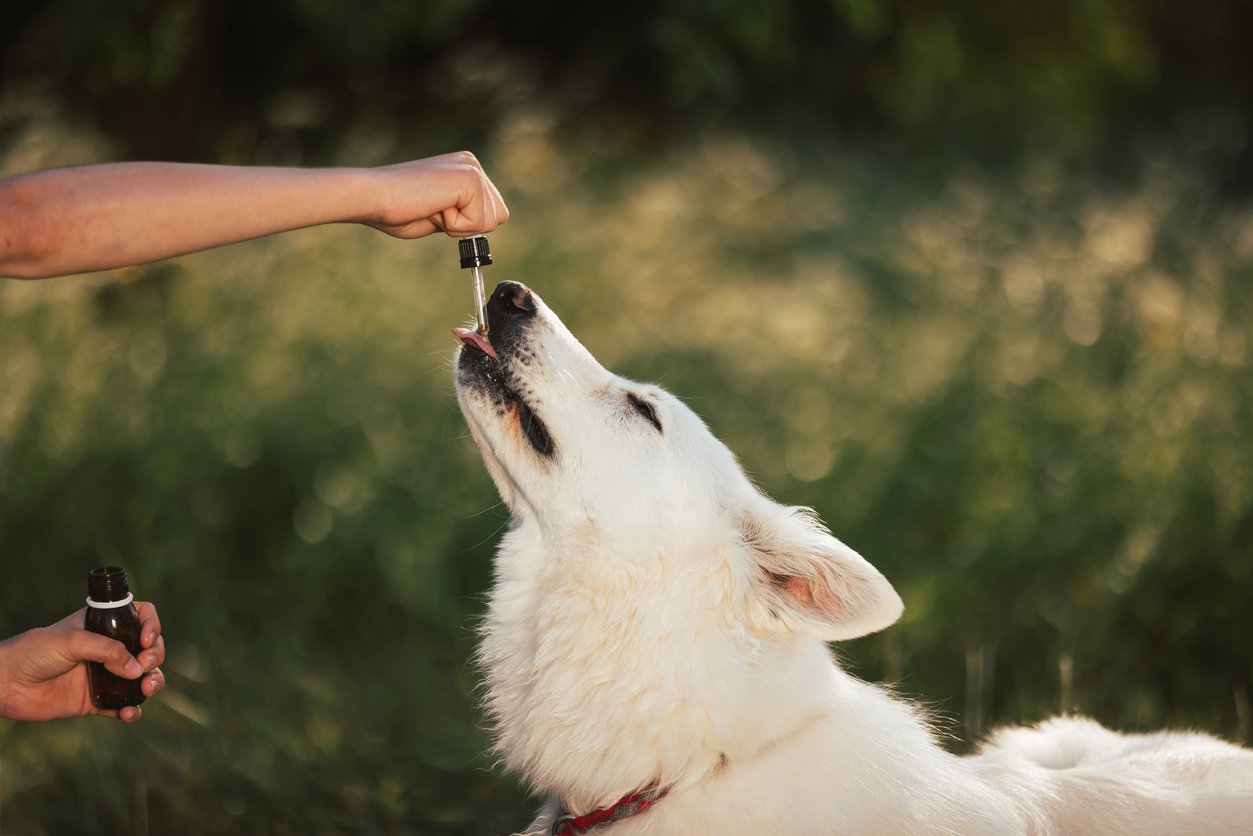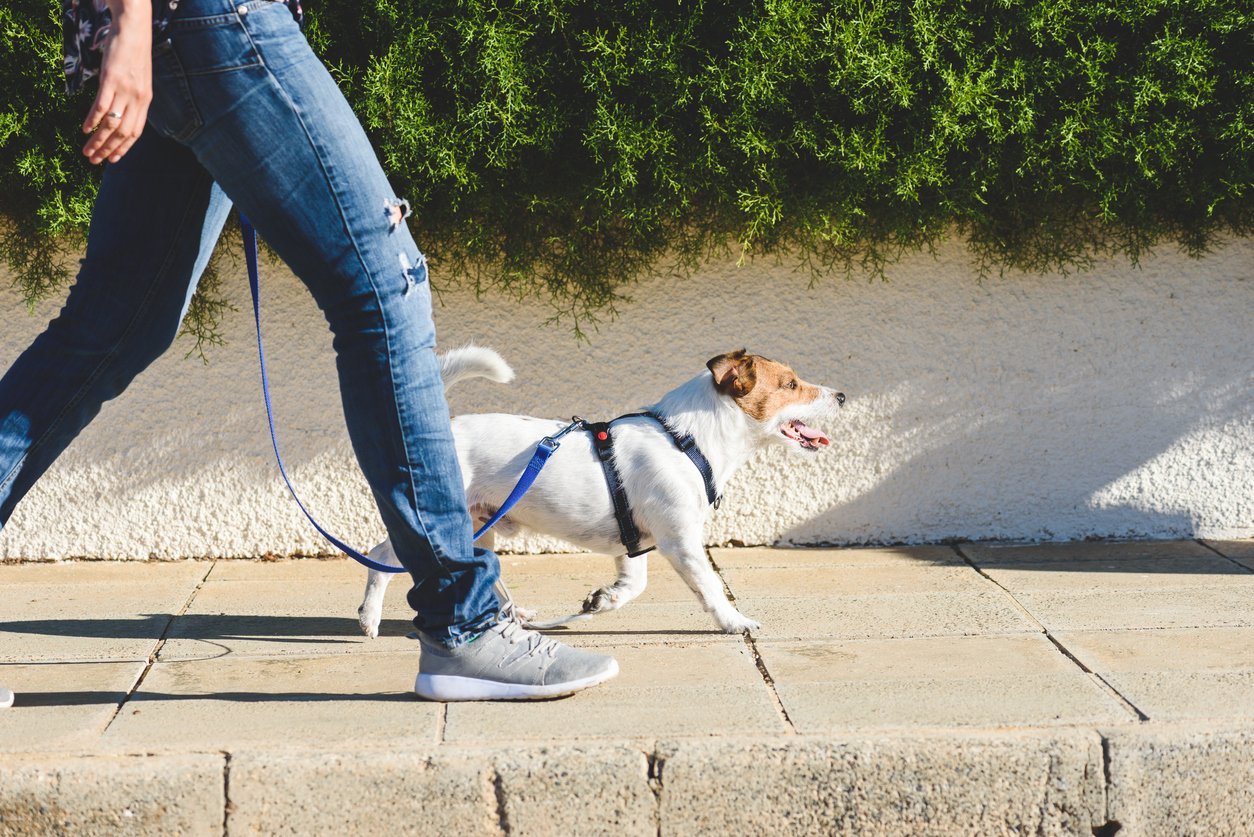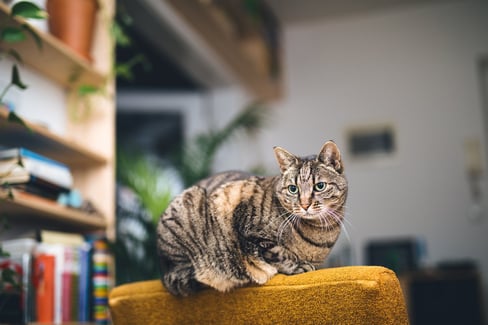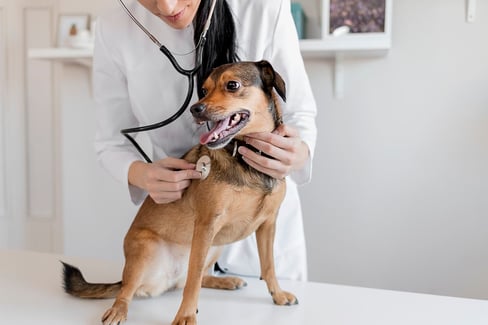Table of Contents
Anyone who shares their home with a feline companion will know that cats have a way of getting into things they shouldn’t and doing things they shouldn’t—probably even more so than dogs!
Their curiosity and agility enable them to jump higher and reach places that even the most athletic of dogs can’t.
In addition, their bodies and digestive systems are often more delicate than that of dogs, and they may react to dietary and other changes differently.
At the end of the day, loving care and attention are required to maintain cat health, including regular check-ups with their veterinarian.
Knowing about common cat health issues, as well as how to prevent them, is one of the first and best steps any current or potential cat owner can take. This helps make sure they’re in the best possible position to safeguard their precious pet’s health.
Common Cat Health Issues & Prevention Tips
1. Vomiting
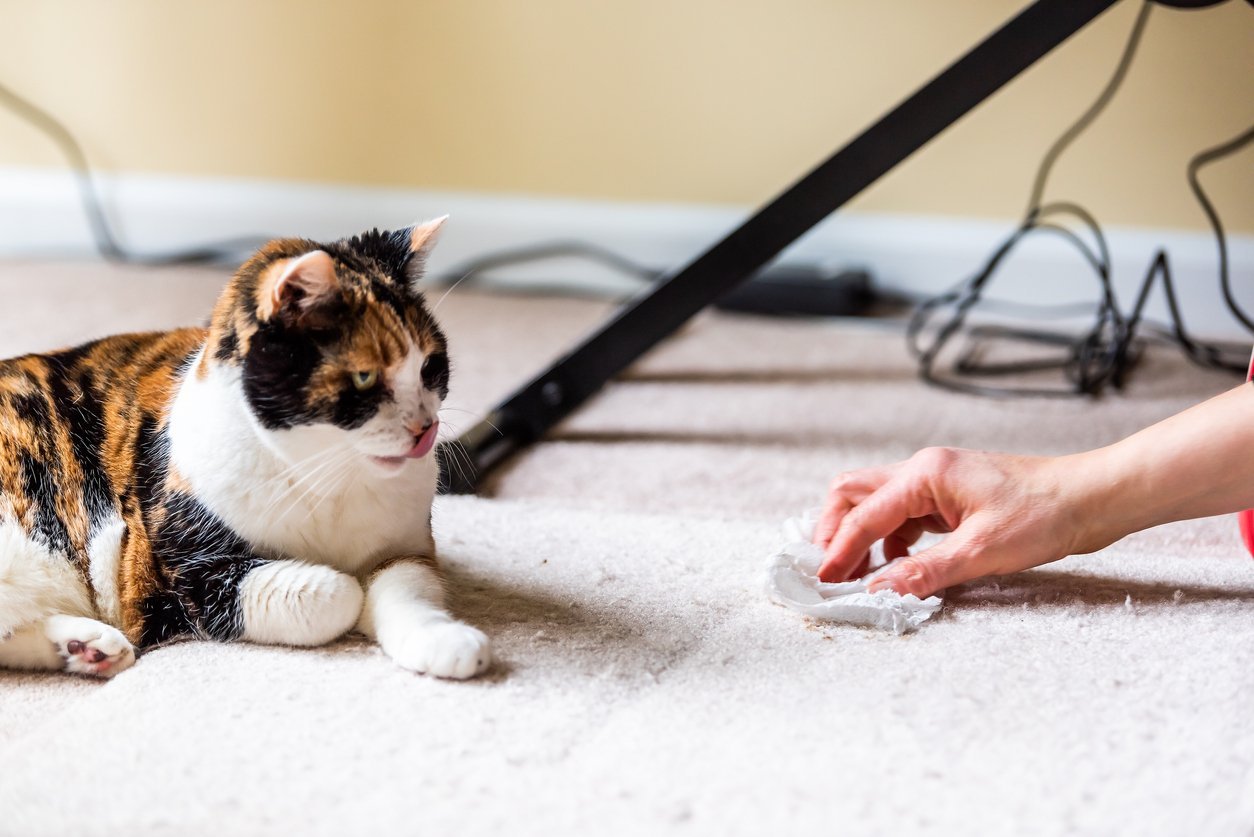
With their ever-curious nature, cats often have no qualms about devouring everything – especially things they’re not supposed to.
Cats often act like they’re starving (even if they’ve just eaten 2 hours ago!) and will devour their food so quickly that it may cause them to throw it all up later.
However, vomiting can also be a sign that your cat’s health is deteriorating, so it should never be taken lightly. Make sure you carefully evaluate what happened before the vomiting started so you know how to address it with your veterinarian.
Consider such factors as:
| Possible Cause | Explanation |
| Has their diet changed recently? | Dietary changes like a new brand of food, or switching from wet to dry, or vice versa |
| Did they get into something potentially harmful like plants, chemicals, or cleaning products? | There are many plants that are deemed unsafe for pets. In addition, chemicals like antifreeze taste sweet, so many animals tend to ingest it. |
| Could they have ingested a foreign object? | Does your cat appear to be in distress? Some cats may vomit because they’re trying to clear an obstruction in their throat. |
It’s important to know these details when you go to discuss cat health problems with your veterinarian. More details help your veterinarian better determine what may have happened, and how to treat it.
Preventative Measures
Preventing vomiting will depend greatly on the cause.
For example, if it’s related to your cat eating too quickly, adjusting the way your cat is fed will be key. Dry food is more easily devoured in a quick fashion, so mixing in some wet food can usually get your cat to slow down.
Another option, if you don’t want to feed wet food, is using a bowl specially designed to slow down fast eaters. Bowls like these are also designed for dogs that are prone to bloat. They provide ridges to help slow your cat down.
When it comes to vomiting due to other issues, be sure to keep a close eye on your cat’s diet, as well as what they have access to.
Be sure to:
- If you’re switching brands or foods, be sure to introduce them slowly. Gradually mix in more and more of the new food with the previous food they’re used to.
- Dangerous substances such as certain house plants and antifreeze should be kept well out of reach. Cats are adept at maneuvering and getting themselves into places they shouldn’t be. Make sure to keep all restricted areas and materials tightly sealed off.
- Be sure to pick up and store away small non-food objects your cat could ingest.
- Go for regular check-ups and make sure kittens get all of their dewormings.
2. Feline Lower Urinary Tract Diseases (FLUTD)
Rather than referring to just one specific disease, Feline Lower Urinary Tract Disease refers to a group of diseases and conditions that affect the bladder and urethra of cats.
Some causes of FLUTD are:
- Being overweight
- Poor/Unbalanced diet
- Urinary stones
- Urethral obstructions
- Birth defects
This condition can occur at any age and any time, but it is usually present in middle-aged cats that are overweight and have a poor diet.
Signs that your cat may be suffering from a FLUTD are:
- Straining to urinate
- Urinating outside of the litter box
- Urinating small amounts frequently
- Crying while urinating
- Blood in the urine
- Licking their private area often
If you notice any of these symptoms, take your cat to the veterinarian immediately. It’s important to get a proper diagnosis quickly so that treatment can begin sooner than later.
Preventative Measures
Since diet can be a major contributor to the development of FLUTD, it’s important to feed a balanced diet. This would include both dry food and wet food.
Diets that consist of only dry food may not provide sufficient moisture or nutrients that are needed to keep your cat’s urinary tract in good working order. Feeding a mix can help prevent issues.
In addition to what you feed your cat, it’s important to also pay attention to how much you feed them. Even though cats act like they’re chronically starving, they’re not.
Giving in to their demands can create weight problems that can contribute to the development of FLUTD. Speak with your veterinarian as to the best food and ratio to feed your cat.
3. Fleas
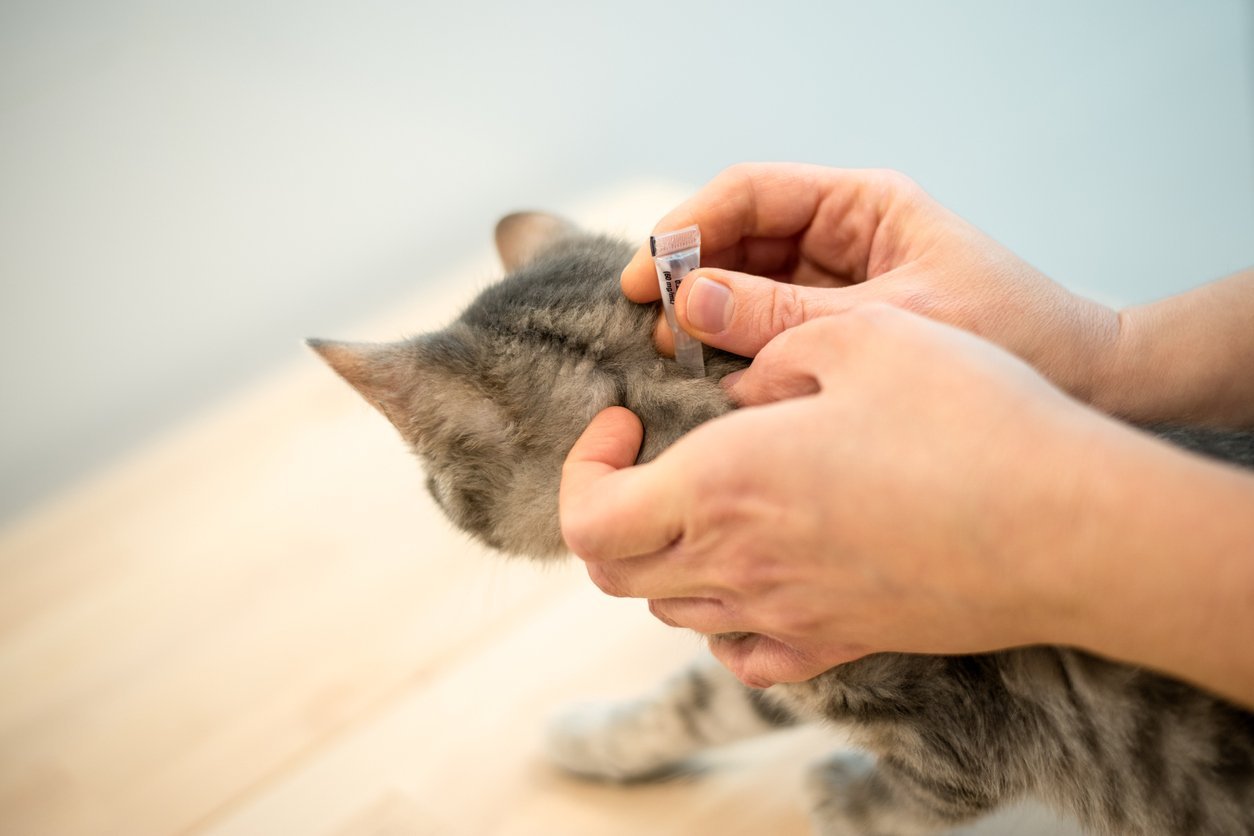
Especially if you allow your cat to venture outdoors, fleas can become an issue. Since fleas flourish in warm weather, this is especially the case in warmer climates or warmer times of the year like spring and summer.
Fleas are tiny parasitic bugs that live on the skin and in the fur of animals. They nourish themselves by biting and drinking on your pet’s blood. They can jump over 6 feet, and their hard bodies make them hard to kill unless you have specific flea shampoos, medications, or sprays.
Though they don’t typically carry diseases, they can cause problems such as anemia. They procreate quickly and a few fleas can turn into an infestation if left unchecked.
Even if your cats live indoors only, if you have dogs as well, they can bring in fleas after they’ve been on walks.
Signs your cat may be affected by fleas are:
- Excessive scratching and biting at their fur and skin
- Hair loss or matting from the scratching and biting
- Visibly seeing small black or brown bugs crawling across the skin
Should you notice any signs of fleas, or the fleas themselves, consult your veterinarian for the wisest course of action for your specific case.
Depending on how serious your specific case is, the following are some treatment options.
| Treatment Options | How To Do It |
| Bathe Your Cat | Easier said than done! But a high-quality flea shampoo, found in most pet stores, is one of the first steps to take when eradicating fleas. These kill any adult fleas or eggs on your cat and often serve as a protectant for a specified period of time. |
| Wash All Bedding | Fleas can live on your cat’s bedding – including yours! Washing and drying them in high heat can kill the fleas that may be hiding in bedding. |
| Treat Your Home With Flea Sprays | Fleas are persistent little buggers! They can live and hide in little nooks and crannies like carpet, cat trees, and even litter boxes. They hide in your home, just lying in wait for a host to walk by so they can jump on. Depending on the severity of the situation, that host may even be you! Treating areas your cat frequents will remove the pests from your midst. |
Prevention Measures
In order to avoid a flea infestation, prevention is key! And as evidenced by the treatment options above, far easier than treating the issue!
Steps you can take:
- Start your pet on flea preventatives.
- If you have dogs as well, check your dogs for fleas frequently – especially if it’s warm.
- Wash bedding regularly
- Treat bedding and frequented areas often, especially in warm climates or during the spring and summer months.
Fleas are hardy, annoying creatures, but the entire ordeal can be avoided if you’re diligent.
4. Diabetes
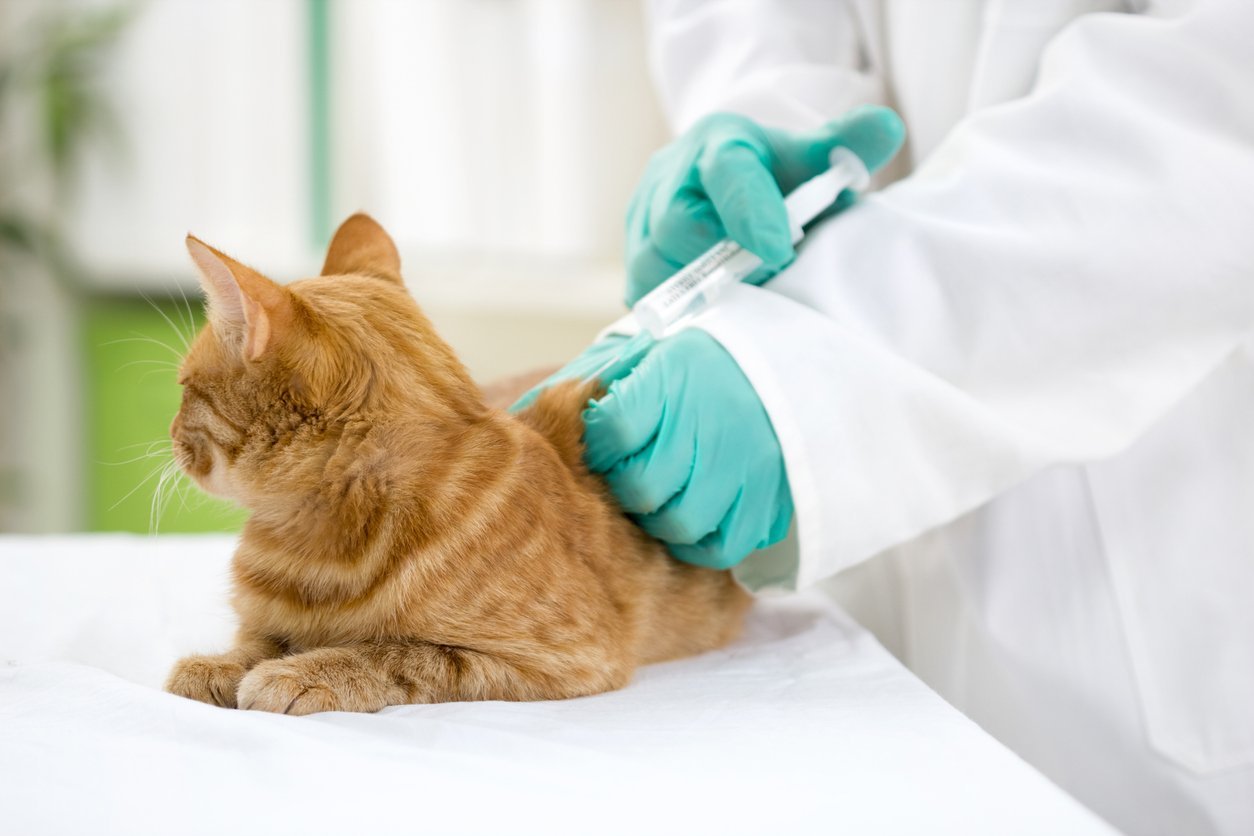
This condition occurs when a cat’s pancreas doesn’t produce enough insulin to balance blood sugar levels. Left untreated, it can cause problems with motor functions, excessive weight loss, severe depression, vomiting, coma, and sadly, death.
It’s important, therefore, to be educated and know how to prevent this disease to the best of your ability.
Signs your cat may have developed diabetes include:
- Increased thirst
- Increased urination
- Unexplained weight loss
- Increase appetite
While there aren’t a strict set of causes, there are some factors that are major contributors to a cat developing diabetes. Causes such as:
- Being overweight
- Thyroid conditions
- Some medications (such as corticosteroids)
Prevention Measures
One of the most important ways to prevent diabetes in your cat is proper diet and exercise.
Obesity makes the body less sensitive to the effects of insulin, making it more susceptible to developing diabetes.
Discuss with your veterinarian what type and amount of food you need to feed your cat in order to keep or get them, to a proper weight.
Even house cats can get proper exercise by playing with toys, and each other if you have more than one. Encourage play, and provide climbing structures such as cat trees. Entice them to climb their cat trees by putting their favorite toys or treats at the top.
Due to advanced age cats may develop diabetes later in life. However, by taking care to provide a proper diet and sufficient exercise, you can greatly reduce the chances of it happening at all.
5. Joint
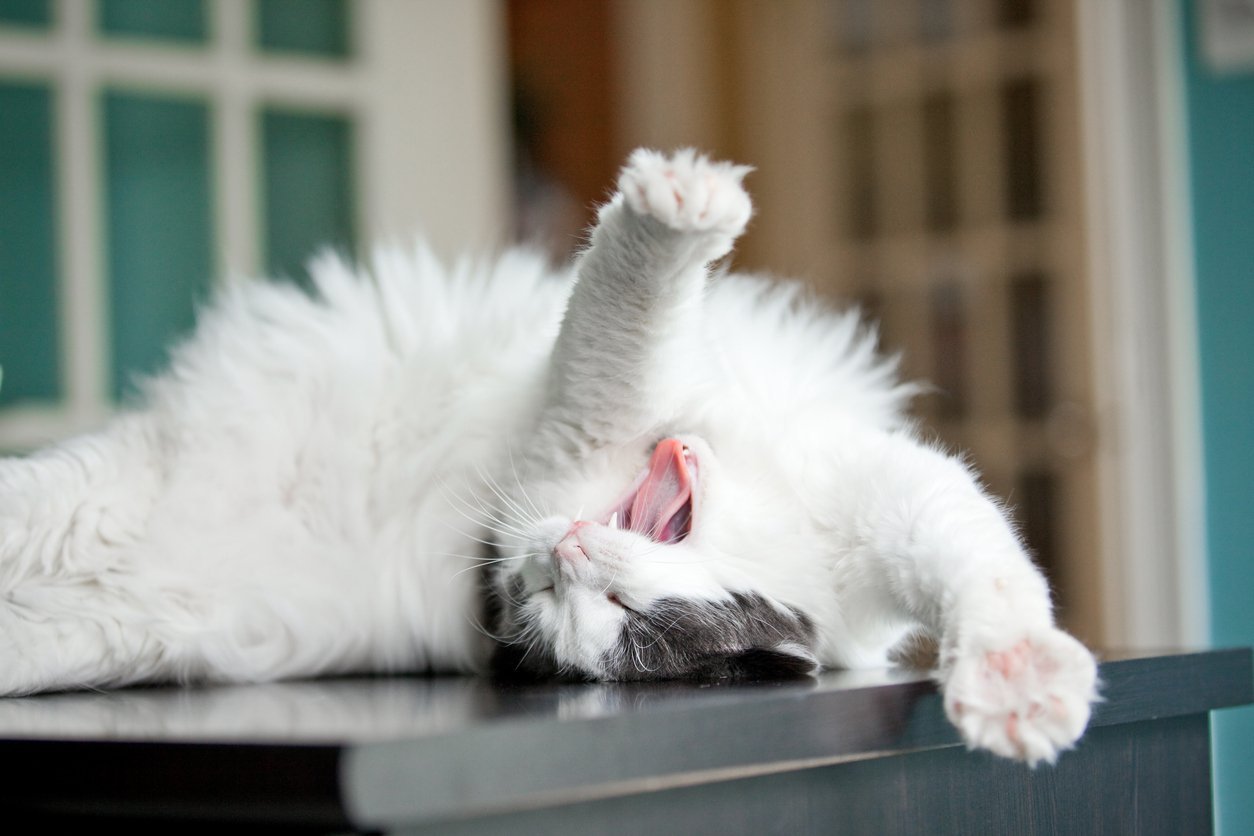
While cats tend to have flexible bodies designed for jumping up and down from significant heights, joint problems can still become an issue. This is especially the case when it comes to larger cats like Maine Coons, cats that are overweight, or those that are getting older.
Problems that can develop are:
- Arthritis
- Tendon or ligament issues
- Luxating patella
Sometimes our feline friends misjudge the distance of a jump and can end up injuring themselves. Or, they may get too curious about something, and end up tangled up in something they have no business in, causing them to inadvertently injure themselves in an attempt to getaway.
As cats get older, they’re also more susceptible to joint problems as joints stiffen.
Prevention Measures
While conditions like arthritis may not be possible to completely prevent, you can delay the onset, and slow down the progress.
You can do this by:
- Feed a healthy, balanced diet to keep their weight in check.
- Provide supplements such as TRI-ACTA and TRI-ACTA H.A. These supplements can help reduce pain and inflammation, and rebuild cartilage so that their joints are properly supported.
- Block off areas (as best as you can!) that cats can potentially injure themselves in.
- They have no qualms about jumping up and down from ridiculous heights – so try to provide them with items like cat trees to satisfy their need to sit up high.
6. Diarrhea
Cats often have no problems eating things that they have no business eating. And anyone that’s ever dealt with cat poop knows that their diarrhea is far worse than dog poop!
Diarrhea can have a variety of causes such as:
- Change of food
- Food allergies or intolerances
- Change of environment
- Bacterial or viral infection
- Intestinal parasites (such as worms)
If your cat has diarrhea, it’s important to make sure they have plenty of fluids, as dehydration can occur quickly.
Be especially mindful if your cat has diarrhea that is black, or looks like coffee grounds. This can indicate internal bleeding and must be addressed by your veterinarian immediately.
Prevention Measures
There are a few steps you can take to make sure cat diarrhea doesn’t become a part of your life – or at least lessens the chance that it does!
| Preventative Measure | Reason |
| Keep a close eye on what your cat may have access to | Certain plants can cause stomach upsets, so make sure to do research about what plants you bring into the home, or keep all plants in a room where the cat has no access to. |
| Make sure your cat gets regular check-ups and dewormings | This step is especially critical if you have a kitten, or if they’re allowed outside. Outside cats are more prone to these conditions because of the variety of substances they’re exposed to. |
| Do dietary changes slowly | Slowly introduce new foods into your cat’s diet to reduce the chance they might have a reaction. |
7. Eye Problems
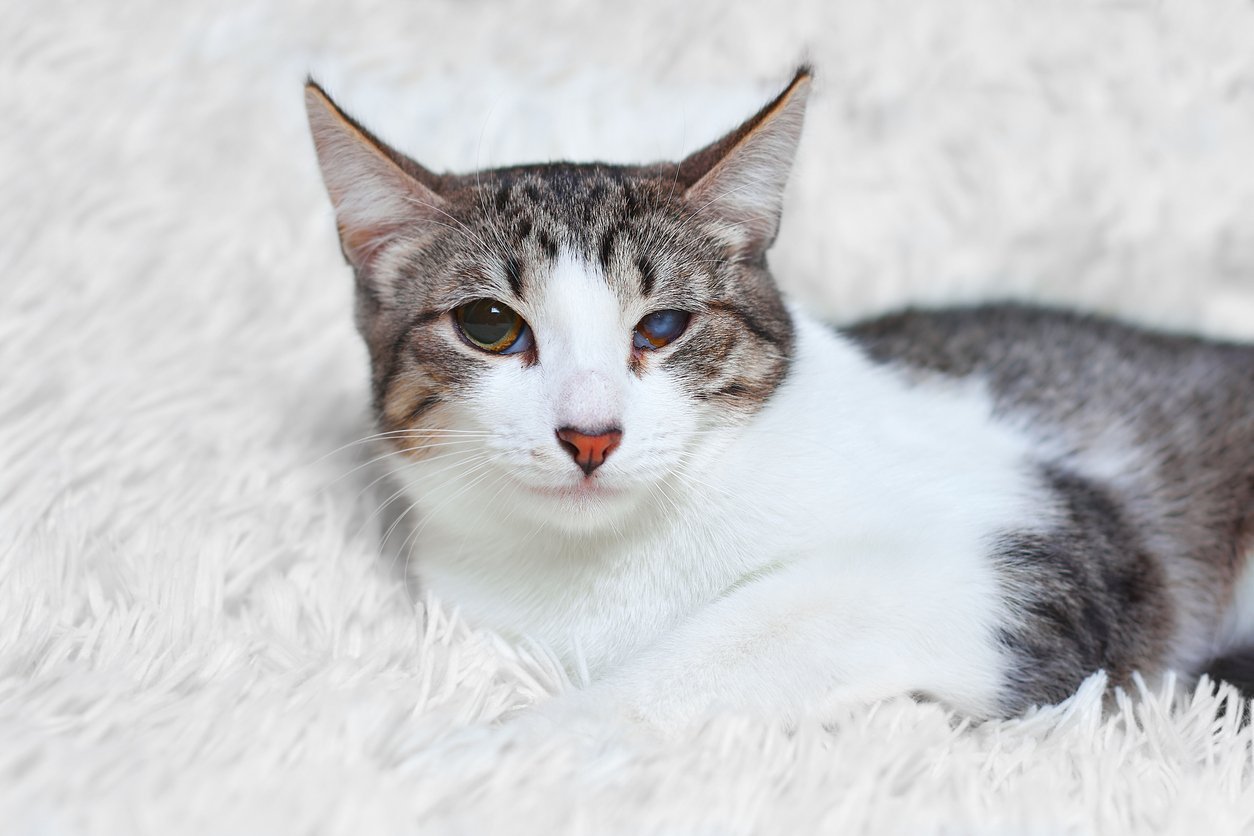
This is of particular concern if your cat ventures outdoors. Sticks, shrubs, leaves, dirt – all of these things can potentially cause injury as your cat slinks through bushes and walks across fences.
Eye issues can also occur in the home. They may scratch themselves too hard, or are trying to scratch their face, they end up hitting their eye. This can lead to eye infections that need to be treated with antibiotics.
Some eye problems that cats are prone to are:
- Conjunctivitis (otherwise known as “pink eye”
- Blepharitis (or Irritated Eyelids)
- Cataracts
- Glaucoma
- Inflamed Corneas
- Corneal Ulcers
Conditions such as Cataracts and Glaucoma typically affect cats that are older, while the other conditions can affect cats of any age.
Prevention Measures
One of the best things to do is to keep your cat indoors. Indoor cats are far safer as they don’t have to contend with traffic, potentially dangerous substances – or the neighbor’s dog.
Other important steps to take include:
- Take your cat for regular vet check-ups. Veterinarians can spot issues that you may not be aware of.
- While petting and spending time with your cat, take a look at their eyes. Check for swelling, cloudiness, or unusual discharge.
Careful, frequent observation is one of the best preventative measures when it comes to ensuring your cat’s eye health.
Cat Breeds, Specific Health Issues & Prevention
Maine Coons
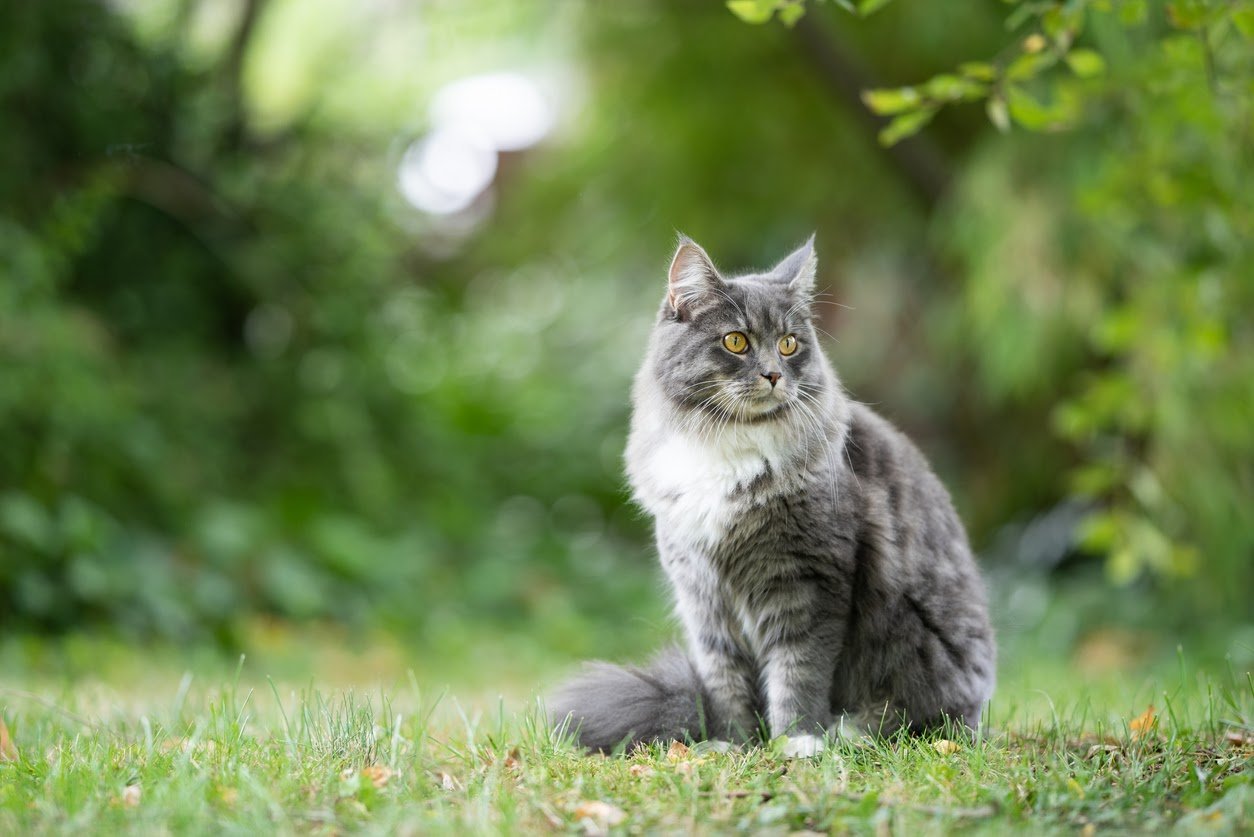
Maine Coons are large, beautiful long-haired cats that were originally bred to catch rats on trading ships.
The average Maine Coon can reach up to about 20 lbs and grow up to four feet long! Their large, muscular build makes them heavier than most cats.
Because of this, it can also result in a larger prevalence of joint problems.
Much like large dogs, large cats are more prone to joint health problems, especially during the growth and development phase. Two such health concerns are Hip Dysplasia, and as they get older, arthritis.
Hip Dysplasia occurs when the ball and socket of the hip joint don’t grow evenly or properly, causing a misalignment of the joint, and resulting in lameness.
Another concern is Spinal Muscular Atrophy, which affects the muscles of the trunk and limbs. This is usually genetic, and tests have to be done to see if your cat is a carrier.
Prevention Measures
Fortunately, it’s possible to prevent musculoskeletal problems by taking a few critical steps.
- Feed a healthy, balanced diet
- Ensure they get adequate exercise to maintain a good weight
- Go for regular veterinary check-ups so your vet can monitor their health.
Another highly recommended preventative measure is providing joint supplements like TRI-ACTA and TRI-ACTA H.A. This helps to ensure the health of the musculoskeletal system by providing your cat with the joint support their bodies need.
Sphynx Cats
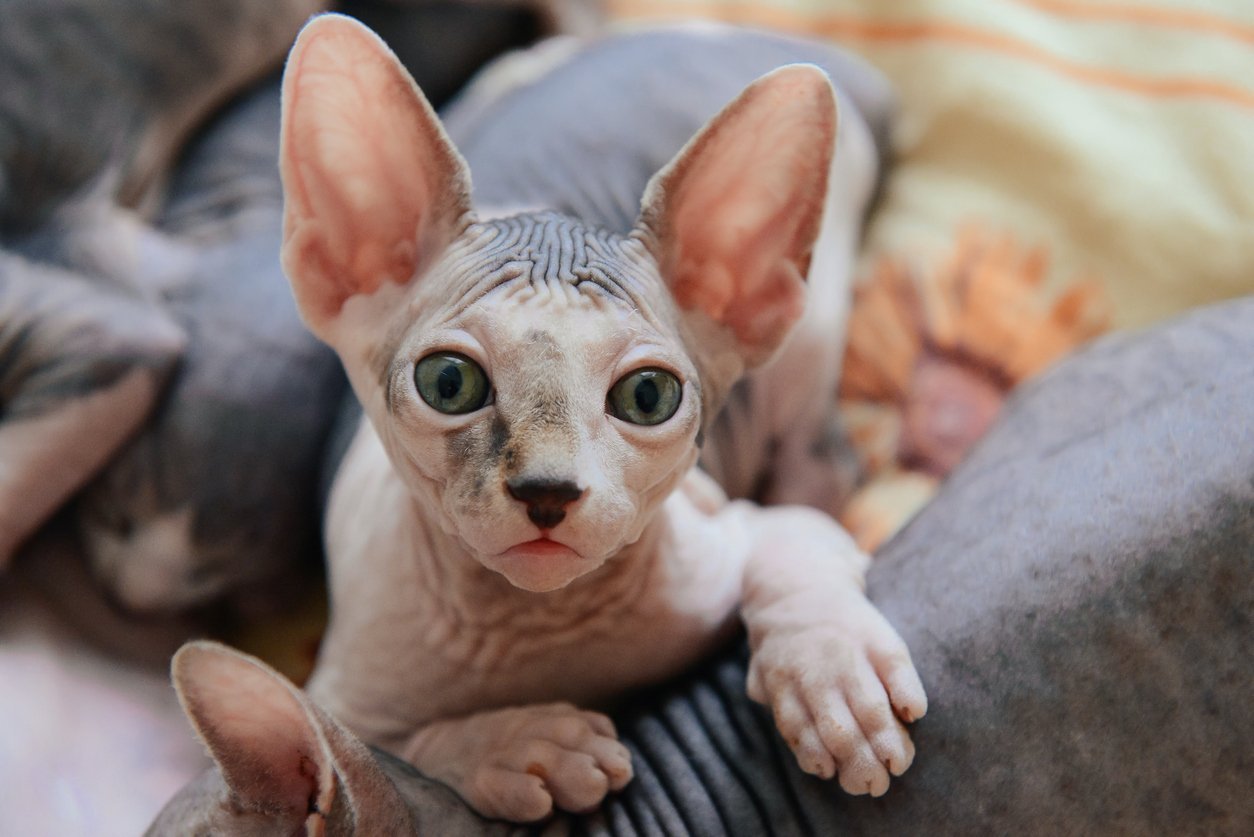
Typically chosen by those who suffer from cat allergies, this hairless breed’s peculiar appearance, but affectionate nature has won the hearts of many.
They’re also named as one of the top cat breeds for people with allergies.
However, their hairless state also makes them more prone to certain skin conditions. Great care must be taken to prevent issues that can cause more serious problems down the line.
Some conditions that Sphynx cats are prone to include:
- Hypertrophic Cardiomyopathy: A genetic condition that can cause thickening of the heart muscles
- Hereditary Myopathy: An inherited condition that affects muscle function.
- Urticaria Pigmentosa: Caused by an accumulation of defective white blood cells in the skin which can cause lesions and red spots.
Prevention Measures
Because of the nature of these conditions, they may be difficult to prevent. However, there are still steps you can take to reduce the chances of running into these problems.
- If you have a choice, make sure you choose a healthy kitten from healthy parents. Inherited conditions are difficult to prevent – and can only be managed.
- Bathe your cat weekly with hypoallergenic pet shampoo. Because of their hairless state, Sphynx cats require more skincare than their hairy counterparts.
- Have regular vet check-ups so that your vet can spot any problems early on.
Persian Cats
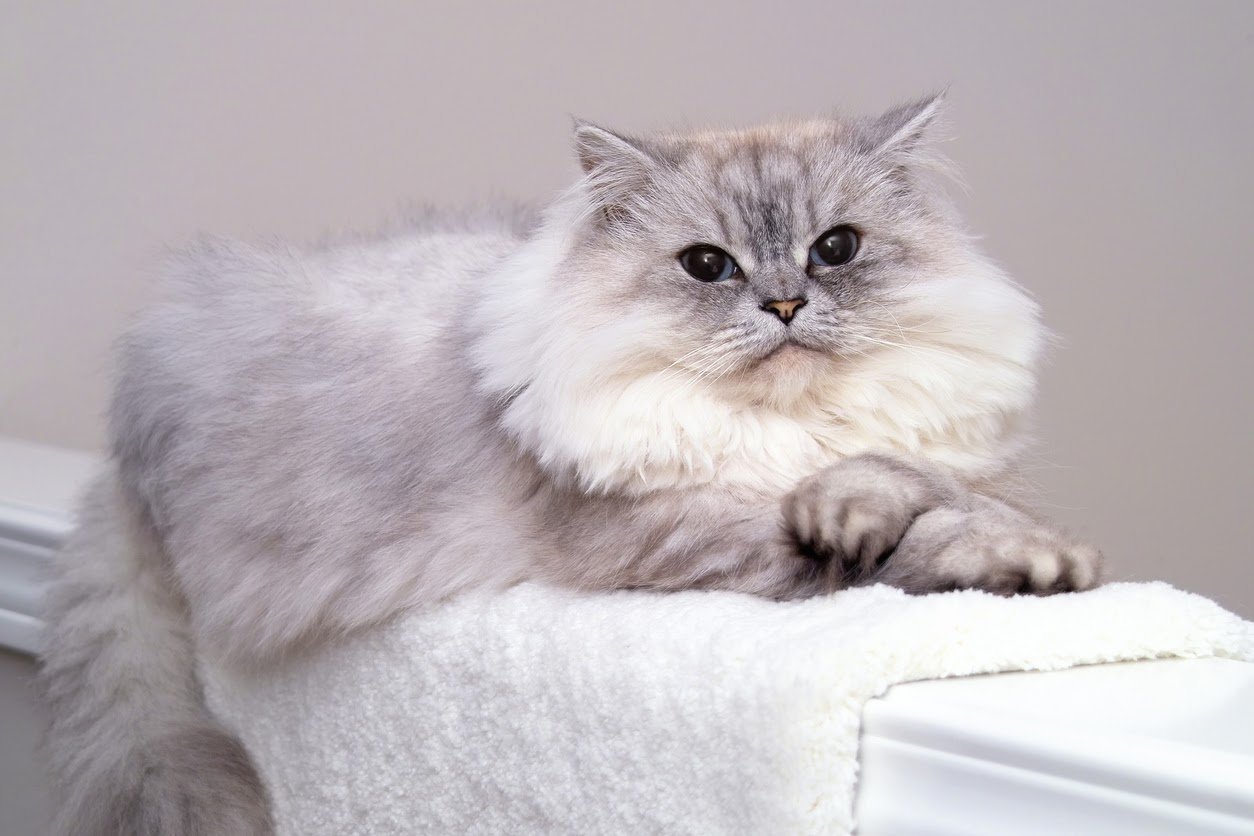
Those beautiful cats in the Fancy Feast commercials are some of the most popular cats in households. In fact, they are ranked as the number one pedigreed cat in the US.
As popular as they are, they are still prone to a few health conditions such as:
- Polycystic Kidney Disease
- Progressive Retinal Atrophy
- Hypertrophic Cardiomyopathy
Prevention Measures
You can lessen your chances of running into hereditary issues by choosing your kitten from a reputable breeder that’s done their due diligence to make sure their breeding cats are healthy.
Other steps to prevent issues include:
- Brush regularly. Because they’re long-haired cats, Persians should be brushed and groomed regularly to avoid matting and to keep their fur clean and healthy.
- Keep them cool. They have short noses, so breathing difficulties are more common with them. It’s important, then, to not let them overheat. Cats pant if they need to cool down, and the shorter airways of the Persian make that a little more difficult. In warmer weather, keep a fan or air conditioning on so that they can maintain a comfortable body temperature, and always have fresh, cool water available for them.
- Get regular checkups. Regular check-ups help your vet diagnose and treat any possible issues before they become potentially life-threatening.
Munchkin Cats
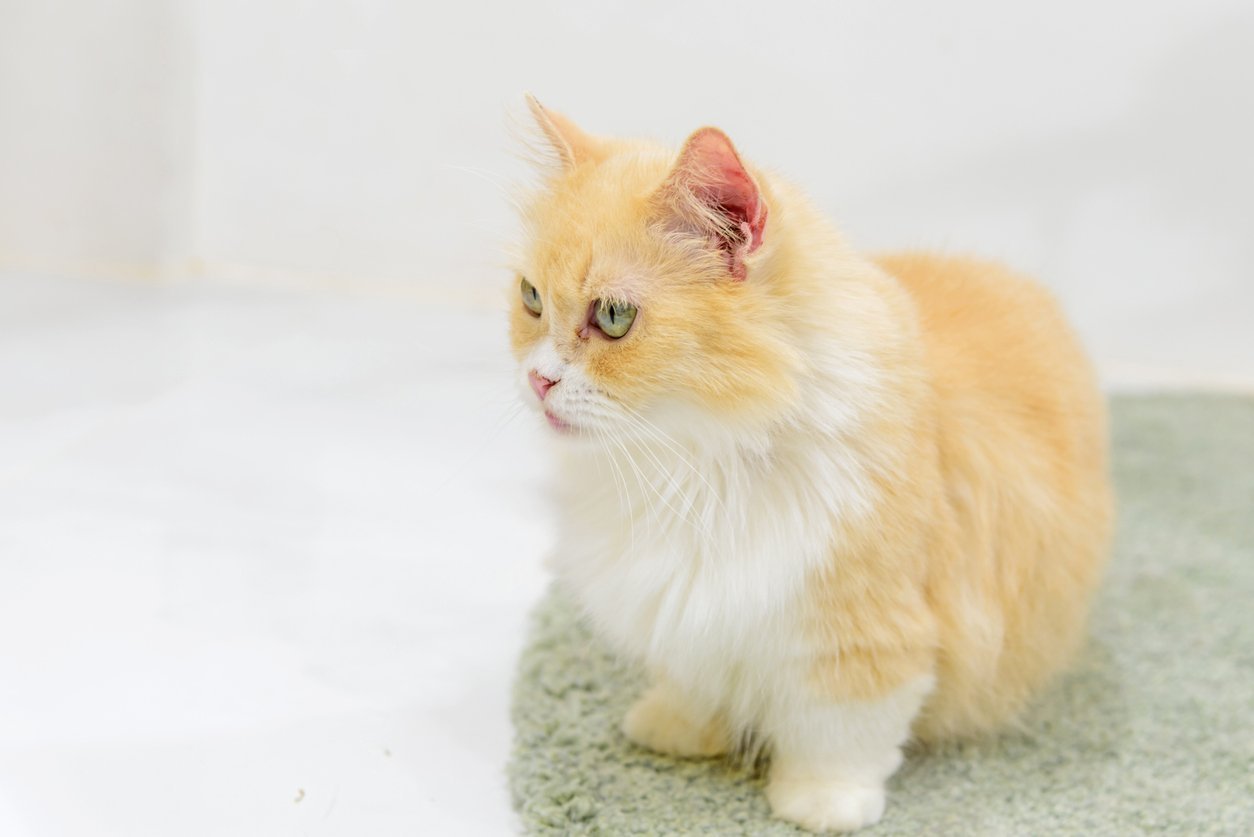
The Dachshund in cat form. With their long bodies and short stubby legs, these adorable little cats have stocky bodies and short legs, endearing anyone who meets them.
While their ferret-like appearance is appealing, it was originally a deformity, and can, unfortunately, make them more prone to certain problems.
Issues that affect Munchkin cats include:
- Spinal problems such as Lordosis
- Difficult grooming because of their proportions
- Increased prevalence of arthritis
Prevention Measures
If you’re purchasing from a breeder, it’s important to buy from someone who is reputable and makes sure their cats and kittens are as healthy as possible.
In addition:
- Keep your cat at a healthy weight. Extra weight can exacerbate any prevalence of spinal issues.
- Perform routine vet care. Your veterinarian can ensure that your cat is in the best of health and catch any problems or potential ones early.
- Feed high-quality supplements. These can help delay the onset and slow the progression of problems such as arthritis.
Even with a prevalence for certain issues, proper care can go a long way to ensure that your Munchkin cat lives a long, healthy, happy life.
Scottish Folds
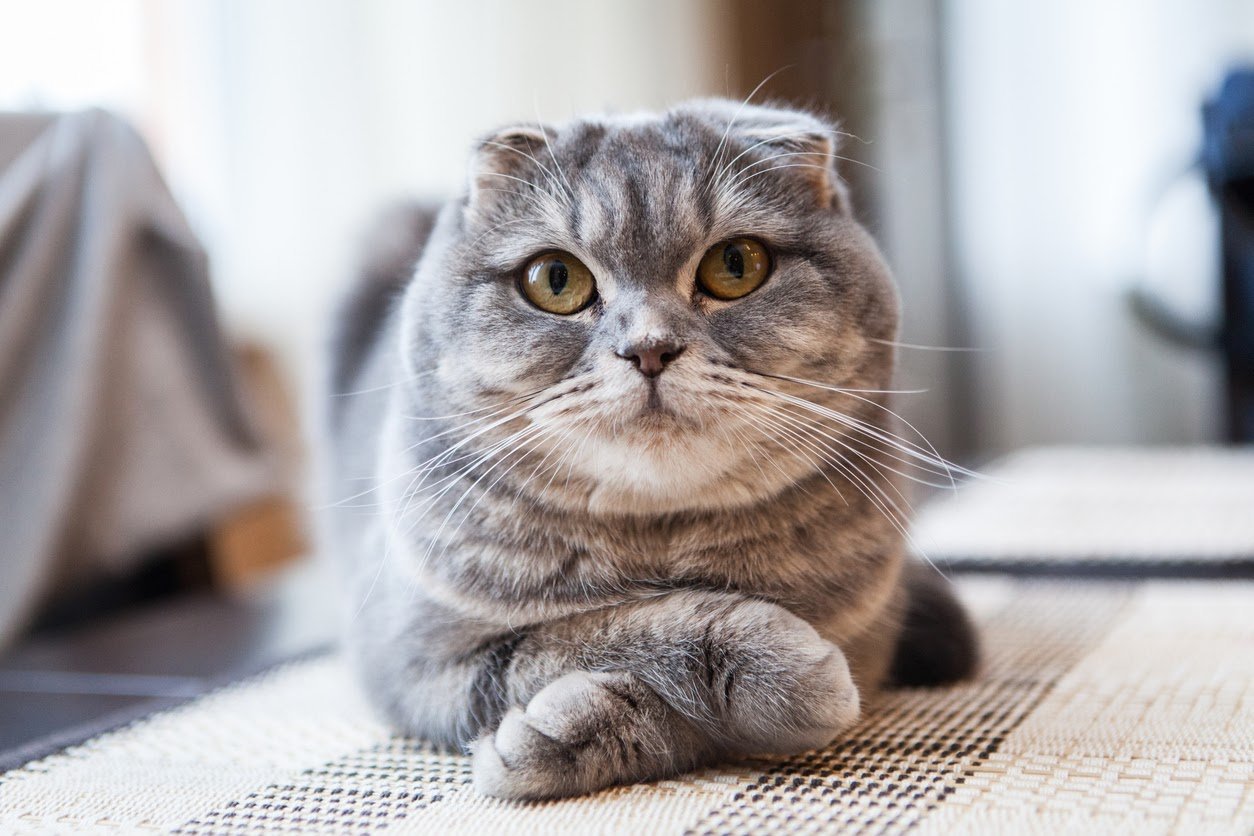
The Scottish Fold is so named because of their ears that are folded over forward. The breed originated in Scotland when the mutation first appeared in a farm cat. The breed was then established with crossovers involving British Shorthairs.
While their look is beyond adorable, it can also make them more prone to ear infections because of the closed-in nature of their ears. In addition, certain skeletal deformities make them more prone to certain musculoskeletal conditions.
Some other problems the Scottish Fold may be prone to are:
- Degenerative Joint Disease
- Hypertrophic Cardiomyopathy
- Ear Infections
Prevention Measures
Though they have unique characteristics, caring for your Scottish Fold is much like caring for most other cats.
Steps you should take include:
- Make sure their ears are cleaned regularly. Dirt and debris can easily get trapped in the ear folds, so regular cleaning is a must in order to make sure the ears are clean and healthy.
- Keep them at a healthy weight. Having a healthy weight can make sure they don’t face complications from problems such as arthritis later in life.
- Give joint supplements. Scottish Folds seem particularly prone to musculoskeletal issues. In order to provide the support that their joints need, consider giving a supplement that contains Glucosamine.
Proactive Cat Health
Those who are fortunate enough to share their home with a feline companion want only the best for them. To that end, it’s important to keep yourself informed on the issues they face, and actively work to prevent them.
Some of the most important steps to keeping your cat feeling its best are feeding your cat a healthy diet, making sure they get proper exercise and regular veterinary care. In addition, supplements are another key component to caring for cat health.
Integricare has been providing top-notch pet supplements with high-quality ingredients for over 20 years.
By making sure you take all of the necessary steps and precautions, you’ll ensure your cat lives a long, healthy life.
Newsletter Signup
Subscribe to our newsletter to receive the latest news and exclusive offers.
.jpg?height=2000&name=Cliick_Integricare-DISPLAY-REVISEDV2%20(1).jpg)
Proactive & Therapeutic Joint Supplements
When given daily, Integricare joint supplements recover bone and joint injuries faster and help prevent mobility injuries from happening in the first place.

